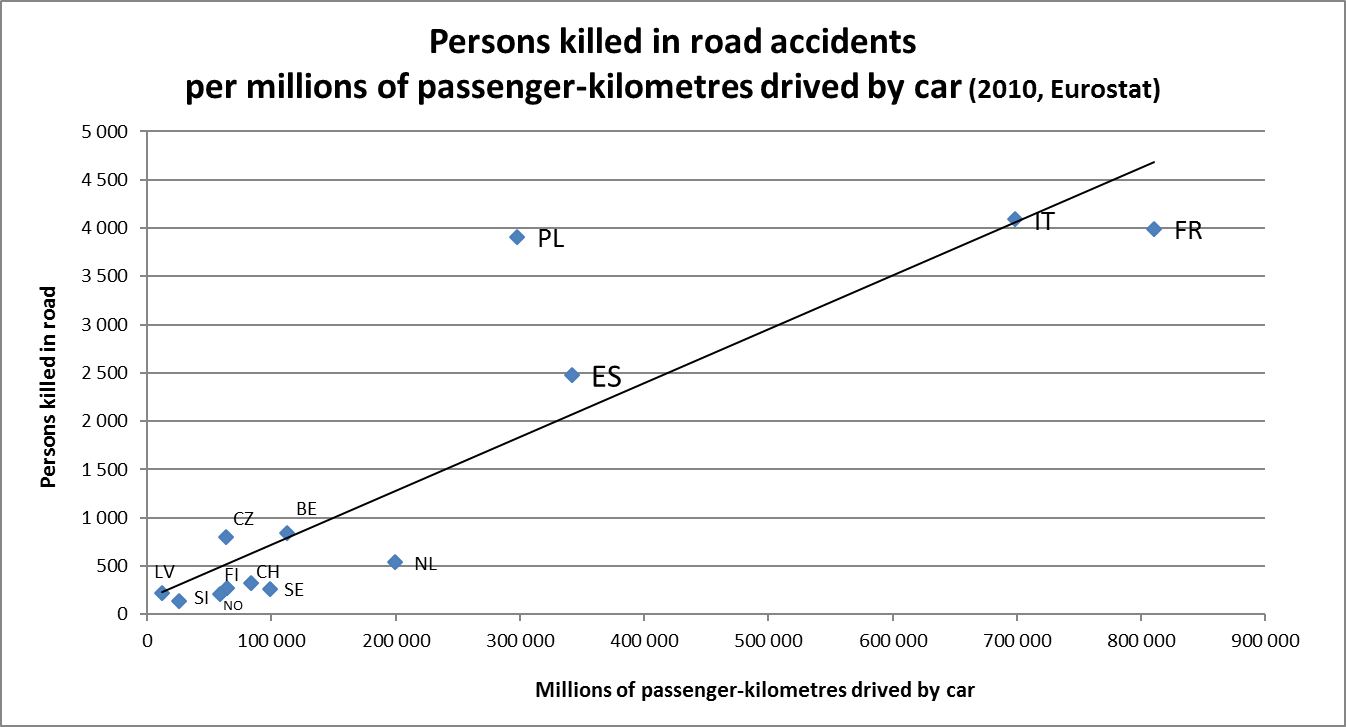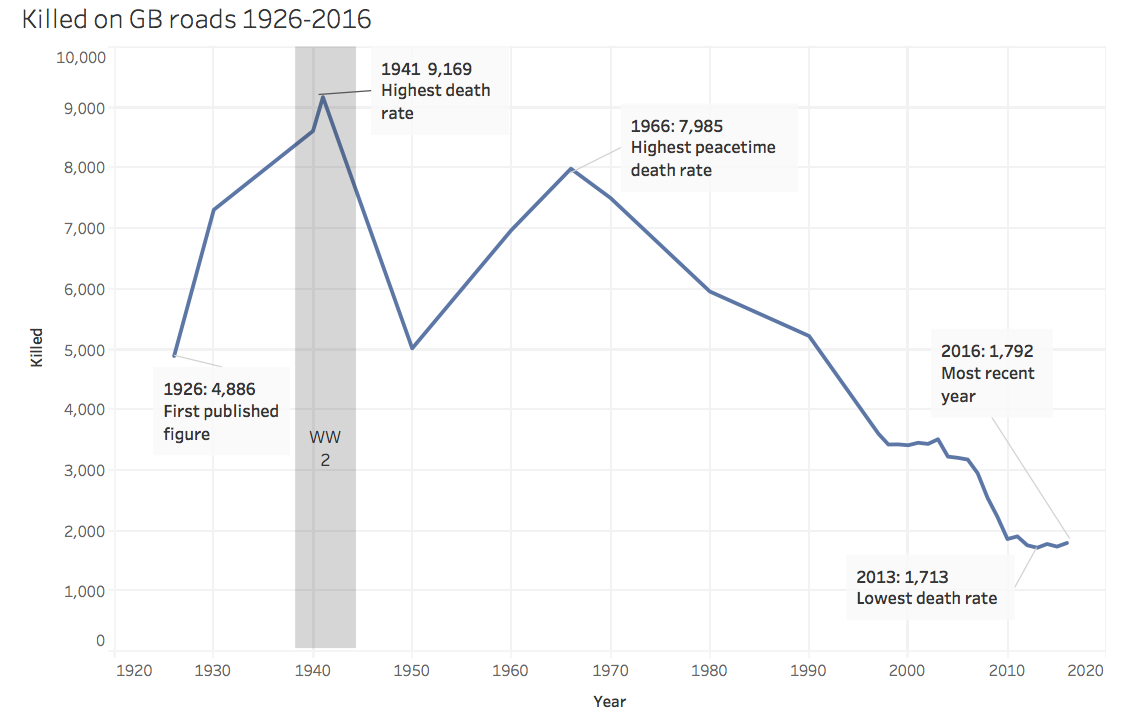|
Killed Or Seriously Injured
Killed or seriously injured (KSI) is a standard metric for safety policy, particularly in transportation and road safety. History ISO 39001 considers a serious injury as having an impact on the body or on the capacity of an individual. Definition United Kingdom definitions *Killed: The usual international definition, as adopted by the Vienna Convention in 1968 is 'A human casualty who dies within 30 days after the collision due to injuries received in the crash'. *Serious injury: The definition is less clear-cut and may vary more over time and in different places. The UK definition covers injury resulting in a person being detained in hospital as an in-patient, in addition all injuries causing: fractures, concussion, internal injuries, crushings, burns (excluding friction burns), severe cuts, severe general shock which require medical treatment even if this does not result in a stay in hospital as an in-patient. *Slight injury: Sprain (including neck whiplash injury), bruising o ... [...More Info...] [...Related Items...] OR: [Wikipedia] [Google] [Baidu] |
Road Safety
Road traffic safety refers to the methods and measures used to prevent road users from being killed or seriously injured. Typical road users include pedestrians, cyclists, motorists, vehicle passengers, horse riders, and passengers of on-road public transport (mainly buses and trams). Best practices in modern road safety strategy: As sustainable solutions for classes of road safety have not been identified, particularly low-traffic rural and remote roads, a hierarchy of control should be applied, similar to classifications used to improve occupational safety and health. At the highest level is sustainable prevention of serious injury and death crashes, with sustainable requiring all key result areas to be considered. At the second level is real-time risk reduction, which involves providing users at severe risk with a specific warning to enable them to take mitigating action. The third level is about reducing the crash risk which involves applying the road-design standards a ... [...More Info...] [...Related Items...] OR: [Wikipedia] [Google] [Baidu] |
Vienna Convention On Road Traffic
The Convention on Road Traffic, commonly known as the Vienna Convention on Road Traffic, is an international treaty designed to facilitate international road traffic and to increase road safety by establishing standard traffic rules among the contracting parties. The convention was agreed upon at the United Nations Economic and Social Council's Conference on Road Traffic (7 October – 8 November 1968) and concluded in Vienna on 8 November 1968. It came into force on 21 May 1977. This conference also produced the Convention on Road Signs and Signals. The Convention had amendments on 3 September 1993 and 28 March 2006. There is a European Agreement supplementing the Convention on Road Traffic (1968), which was concluded in Geneva on 1 May 1971. Contracting parties The Vienna Convention on Road Traffic was concluded at Vienna on 8 November 1968. Since its entry into force on 21 May 1977, in signatory countries ("Contracting Parties") it replaces previous road traffic conventions, ... [...More Info...] [...Related Items...] OR: [Wikipedia] [Google] [Baidu] |
Bone Fracture
A bone fracture (abbreviated FRX or Fx, Fx, or #) is a medical condition in which there is a partial or complete break in the continuity of any bone in the body. In more severe cases, the bone may be broken into several fragments, known as a ''comminuted fracture''. A bone fracture may be the result of high force impact or stress, or a minimal trauma injury as a result of certain medical conditions that weaken the bones, such as osteoporosis, osteopenia, bone cancer, or osteogenesis imperfecta, where the fracture is then properly termed a pathologic fracture. Signs and symptoms Although bone tissue contains no pain receptors, a bone fracture is painful for several reasons: * Breaking in the continuity of the periosteum, with or without similar discontinuity in endosteum, as both contain multiple pain receptors. * Edema and hematoma of nearby soft tissues caused by ruptured bone marrow evokes pressure pain. * Involuntary muscle spasms trying to hold bone fragments in place. D ... [...More Info...] [...Related Items...] OR: [Wikipedia] [Google] [Baidu] |
Concussion
A concussion, also known as a mild traumatic brain injury (mTBI), is a head injury that temporarily affects brain functioning. Symptoms may include loss of consciousness (LOC); memory loss; headaches; difficulty with thinking, concentration, or balance; nausea; blurred vision; sleep disturbances; and mood changes. Any of these symptoms may begin immediately, or appear days after the injury. Concussion should be suspected if a person indirectly or directly hits their head and experiences any of the symptoms of concussion. It is not unusual for symptoms to last 2 weeks in adults and 4 weeks in children. Fewer than 10% of sports-related concussions among children are associated with loss of consciousness. Common causes include motor vehicle collisions, falls, sports injuries, and bicycle accidents. Risk factors include drinking alcohol and a prior history of concussion. The mechanism of injury involves either a direct blow to the head or forces elsewhere on the body that a ... [...More Info...] [...Related Items...] OR: [Wikipedia] [Google] [Baidu] |
Friction Burn
A friction burn is a form of abrasion caused by the friction of skin rubbing against a surface. A friction burn may also be referred to as skinning, chafing, or a term named for the surface causing the burn such as rope burn, carpet burn or rug burn. Because friction generates heat, extreme cases of chafing may result in genuine burning of the outer layers of skin. The dermal papillae may be exposed after top layers of the epidermis (stratum corneum, stratum granulosum, stratum spinosum and stratum basale) have been removed. This is often uncomfortable and even painful, but rarely results in bleeding. A person's own skin (or the skin of another person) may be sufficient to act as an abrasive surface to cause friction burn. More commonly, friction with abrasive surfaces, including clothing, carpet, or rope, can lead to a friction burn. Common places at which skin-to-skin chafing can occur are between the thighs and under the armpits. Friction burns are very common with cloth ... [...More Info...] [...Related Items...] OR: [Wikipedia] [Google] [Baidu] |
Maximum Abbreviated Injury Score
In mathematical analysis, the maxima and minima (the respective plurals of maximum and minimum) of a function, known collectively as extrema (the plural of extremum), are the largest and smallest value of the function, either within a given range (the ''local'' or ''relative'' extrema), or on the entire domain (the ''global'' or ''absolute'' extrema). Pierre de Fermat was one of the first mathematicians to propose a general technique, adequality, for finding the maxima and minima of functions. As defined in set theory, the maximum and minimum of a set are the greatest and least elements in the set, respectively. Unbounded infinite sets, such as the set of real numbers, have no minimum or maximum. Definition A real-valued function ''f'' defined on a domain ''X'' has a global (or absolute) maximum point at ''x''∗, if for all ''x'' in ''X''. Similarly, the function has a global (or absolute) minimum point at ''x''∗, if for all ''x'' in ''X''. The value of the function at a m ... [...More Info...] [...Related Items...] OR: [Wikipedia] [Google] [Baidu] |
Statistical Significance
In statistical hypothesis testing, a result has statistical significance when it is very unlikely to have occurred given the null hypothesis (simply by chance alone). More precisely, a study's defined significance level, denoted by \alpha, is the probability of the study rejecting the null hypothesis, given that the null hypothesis is true; and the ''p''-value of a result, ''p'', is the probability of obtaining a result at least as extreme, given that the null hypothesis is true. The result is statistically significant, by the standards of the study, when p \le \alpha. The significance level for a study is chosen before data collection, and is typically set to 5% or much lower—depending on the field of study. In any experiment or observation that involves drawing a sample from a population, there is always the possibility that an observed effect would have occurred due to sampling error alone. But if the ''p''-value of an observed effect is less than (or equal to) the significanc ... [...More Info...] [...Related Items...] OR: [Wikipedia] [Google] [Baidu] |
Persons Killed In Road Accidents Per Millions Of Passenger-kilometres Driven By Car
A person ( : people) is a being that has certain capacities or attributes such as reason, morality, consciousness or self-consciousness, and being a part of a culturally established form of social relations such as kinship, ownership of property, or legal responsibility. The defining features of personhood and, consequently, what makes a person count as a person, differ widely among cultures and contexts. In addition to the question of personhood, of what makes a being count as a person to begin with, there are further questions about personal identity and self: both about what makes any particular person that particular person instead of another, and about what makes a person at one time the same person as they were or will be at another time despite any intervening changes. The plural form "people" is often used to refer to an entire nation or ethnic group (as in "a people"), and this was the original meaning of the word; it subsequently acquired its use as a plural form of per ... [...More Info...] [...Related Items...] OR: [Wikipedia] [Google] [Baidu] |
Epidemiology Of Motor Vehicle Collisions
Worldwide it was estimated that 1.25 million people were killed and many millions more were injured in motor vehicle collisions in 2013. This makes motor vehicle collisions the leading cause of death among young adults of 15–29 years of age (360,000 die a year) and the ninth cause of death for all ages worldwide. In the United States, 40,100 people died and 2.8 million were injured in crashes in 2017, and around 2,000 children under 16 years old die every year. History and trends Road toll figures in developed nations show that car collision fatalities have declined since 1980. Japan is an extreme example, with road deaths decreasing to 5,115 in 2008, which is 25% of the 1970 rate per capita and 17% of the 1970 rate per vehicle distance travelled. In 2008, for the first time, more pedestrians than vehicle occupants were killed in Japan by cars. Besides improving general road conditions like lighting and separated walkways, Japan has been installing intelligent transportat ... [...More Info...] [...Related Items...] OR: [Wikipedia] [Google] [Baidu] |
Reported Road Casualties Great Britain
''Reported Road Casualties Great Britain'' (RRCGB), formerly ''Road Casualties Great Britain'' (RCGB) and before that ''Road Accidents Great Britain'' (RAGB), is the official statistical publication of the UK Department for Transport (DfT) on traffic casualties, fatalities and related road safety data. This publication, first produced in 1951, is the primary source for data on road casualties in Great Britain. It is based primarily on police STATS19 data. Data has been collected since 1926. The remainder of the UK casualty statistics, those from Northern Ireland, are reported separately by the PSNI. Published data Data has been collected since 1926, in which year there were 4,886 fatalities in some 124,000 crashes. Department for Transport (2006), p. 92 'Road accident and casualty data was first collect on a national level in 1926. That year there were 4,886 recorded deaths in some 124,000 accidents' Between 1951 and 2006 a total of 309,144 people were killed and 17.6 million ... [...More Info...] [...Related Items...] OR: [Wikipedia] [Google] [Baidu] |



_1938.jpg)
